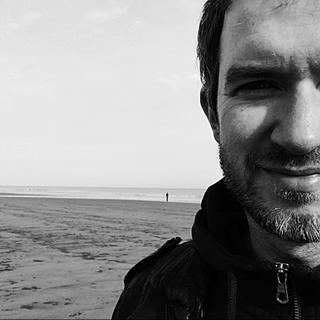Man O'War Character Sketches #1: Dhiraj Om
- Dan Jones
- Jan 19, 2018
- 4 min read
Over the coming weeks in the run up to the launch of Man O’War, I’ll be posting a few lines on each of the main characters in the book, about who they are, what they do and their role in the book. They’re a varied and diverse bunch, in more ways than one, and I have a soft spot for them all. I’ll also be posting a little bit about the creation and inception of each character, and why they are the way they are. I won’t be posting anything spoilerific; these will be more like author musings, which hopefully will provide more background to the characters and their world.
The six POV characters are, in order of appearance: the jellyfisherman Dhiraj Om; the corporate Head of R&D Nita Rhodes; brutal gangster Agarkka D'Souza; black market engineer Salazar Gomez;oil heir and civil servant Adem Johnson; and hard-nosed policewoman Tilda Boulton. We'll start with Dhiraj Om.
Dhiraj Om
Dhiraj Om is my essential “everyman” character, the one with whom I’d expect the majority of the reading audience to relate. His apparently simple decisions at the start of the book act as a catalyst for everything else that happens, while his relatively basic wants and needs (to provide for his family, to stay safe) are the anchor for his fish-out-of-water story.
Appropriately enough for a fish out of water, he’s most comfortable at sea. When I started writing MOW, I had images for three key scenes in my head: the opening, the critical middle scene, and the ending. The opening image was the discovery made at sea. Therefore, the discoverer was only ever going to be someone who worked at sea, and someone who worked alone. Therefore Dhiraj Om was to be a fisherman, and with a little 22nd-century extrapolation (the impact of catastrophic overfishing, pollution, and extinction of some species), he became a jellyfisherman, scouring the freezing waters of the North Sea for bounties of moon jellies. (It seems I’m developing a pattern of giving my protagonists otherworldly, portmanteau job titles: in Hole In The Sky Grub Teng is a "psychitect".) So we meet Raj first on his autonomous fishing skiff The Lion’s Mane, going about his business, when the chance happening upon a rare, valuable and illegal bounty in his nets – the pleasure robot, or kokeshi, called Naomi – thrusts an ordinary man into an extraordinary situation, for which he seems ill prepared and equipped, both physically and emotionally.
Dhiraj is the only character – the only human character – for whom there wasn’t some real-world anchor upon which I could base him. In short, I don't know any jellyfishermen. In that respect writing an everyman (or everywoman, but because Dhiraj is a man, I’ll stick with everyman) character is relatively simple. One doesn’t need a specific point of reference in based in reality, as the everyman could be any of us, and is the person whose thought patterns will most closely resemble our own, which when the going gets stressful, most of the time can be boiled down to, “how the hell did things get to this?” I’ll be honest, I think that each time my one year old throws yoghurt on the floor, so throwing some violent and vengeful gangsters and a few deaths into the mix must really only be an amplification of this yoghurt-on-the-floor emotions. I’m guessing, anyway (isn’t that what writers do? he said cheekily).
As Dhiraj and Naomi spend time together, trying to get through the situation in which they find themselves, they help each other in very unexpected ways. One of the major themes of the book is the way in which technology is commandeered and used (and I’ll write a bit more about this when I tackle the characters of Nita and Adem) in a secondary fashion. In my line of work there’s a lot of talk about which new technologies will enter the market and when, and how they will help the economy and society at large. I usually contend, with my writer’s hat on, that it’s not possible to truly know how the technology will impact society (and the economy) until it’s been dropped into society. In a sort of distortion of the Observation Principal, once you start using a piece of technology, you change it – and it changes you. It’s a given to say that a robot will help humans to lift bigger things, or get to places more efficiently, or communicate more easily, or work longer hours. But when they reveal new things about ourselves is when things get really interesting, and potentially dangerous.
Dhiraj and Naomi undergo literal and figurative changes in the course of the book, that reveal to Dhiraj things about himself he would never have understood or thought about. And in return, he begins to feel certain things for this artificial being. It’s easy to say that we can become connected to robots, in the same way that we become attached to objects of little outward importance – a trinket of some sentimental value. But when robots are used in new ways, and that in turn reveals new things about the user, then they transcend being mere items, or things, and could be thought of as something else. Perhaps one might think of them as not engineering but art, moving us in the way a painting, a book, or a piece of music might. Or, if you’re like Nita Rhodes, you might think of them as something else entirely. But we’ll come to her character next week.
















Comments